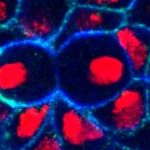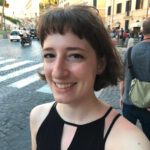Link to HAL – Click here
Abstract
Lateral inhibition mediates alternative cell fate decision and produces regular cell fate patterns with fate symmetry breaking (SB) relying on the amplification of small stochastic differences in Notch activity via an intercellular negative feedback loop. Here, we used quantitative live imaging of endogenous Scute (Sc), a proneural factor, and of a Notch activity reporter to study the emergence of Sensory Organ Precursor cells (SOPs) in the pupal abdomen of Drosophila. SB was observed at low Sc levels and was not preceded by a phase of intermediate Sc expression and Notch activity. Thus, mutual inhibition may only be transient in this context. In support of the intercellular feedback loop model, cell-to-cell variations in Sc levels promoted fate divergence. The size of the apical area of competing cells did not detectably bias this fate choice. Surprisingly, cells that were in direct contact at the time of SB could adopt the SOP fate, albeit at low frequency (10%). These lateral inhibition defects were corrected by cellular rearrangements, not cell fate change, highlighting the role of cell-cell intercalation in pattern refinement.
Keywords: Heterogeneity; Lateral inhibition; Live imaging; Notch; Proneural factor; Symmetry breaking.
Competing Interest Statement
The authors have declared no competing interest.
Copyright
© 2024. Published by The Company of Biologists Ltd.






